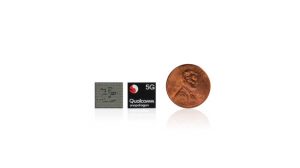What do BMW, Tencent, Pokémon Go creator Niantic, movie director Jon Favreau and construction giant Skanska have in common? They’re all using the same platform to create their products.
Founded in a small Copenhagen apartment in 2004, Unity Technologies’ makes a game engine — a software platform for building video games. But the company, which was recently valued around $6 billion and could be headed toward an IPO, is becoming much more than that.
“Unity wants to be the 3D operating system of the world,” says Sylvio Drouin, VP of the Unity Labs R&D team.
Customers can design, buy, or import digital assets like forests, sound effects, and aliens and create the logic guiding how all these elements interact with players. Nearly half of the world’s games are built with Unity, which is particularly popular among mobile game developers.
And in the fourteen years since Unity’s engine launched, the size of the global gaming market has exploded from $27 billion to $135 billion, driven by the rise of mobile gaming, which now comprises the majority of the market.
Unity is increasingly used for 3D design and simulations across other industries like film, automotive, and architecture and is now used to create 60% of all augmented and virtual reality experiences. That positions Unity — as Facebook CEO Mark Zuckerburg argued in a 2015 memo in favor of acquiring it — as a key platform for the next wave of consumer technology after mobile.
Unity’s growth is a case study of Clayton Christensen’s theory of disruptive innovation. While other game engines targeted the big AAA game makers at the top of the console and PC markets, Unity went after independent developers with a less robust product that was better suited to their needs and budget.
As it gained popularity, the company captured growth in frontier market segments and also expanded upmarket to meet the needs of higher-performance game makers. Today, it’s making a push to become the top engine for building anything in interactive 3D.
This article is part of my ongoing research into the future of interactive media experiences. This research has included interviews with dozens of developers, executives, and investors in gaming and other industries, including interviews with over 20 Unity executives.
Founding
Unity was founded in Copenhagen by Nicholas Francis, Joachim Ante, and David Helgason. Its story began on an OpenGL forum in May 2002, where Francis posted a call for collaborators on an open source shader-compiler (graphics tool) for the niche population of Mac-based game developers like himself. It was Ante, then a high school student in Berlin, who responded.
Ante complemented Francis’ focus on graphics and gameplay with an intuitive sense for back-end architecture. Because the game he was working on with another team wasn’t going anywhere, they collaborated on the shader part-time while each pursued their own game engine projects, but decided to combine forces upon meeting in-person. In a sprint to merge the codebases of their engines, they camped out in Helgason’s apartment for several days while he was out of town. The plan was to start a game studio grounded in robust tech infrastructure that could be licensed as well.
Helgason and Francis had worked together since high school, working on various web development ventures and even short-lived attempts at film production. Helgason dropped in and out of the University of Copenhagen while working as a freelance web developer. He provided help where he could and joined full-time after several months, selling his small stake in a web development firm to his partners.
According to Ante, Helgason was “good with people” and more business-oriented, so he took the CEO title after the trio failed to find a more experienced person for the role. (It would be two years before Ante and Francis extended the co-founder title and a corresponding amount of equity to Helgason.)
They recruited a rotating cast to help them for free while prototyping a wide range of ideas. The diversity of ideas they pursued resulted in an engine that could handle a broad range of use cases. Commercializing the engine became a focus, as was coming up with a hit game that would show the engine off to its best advantage; for indie developers, having to reconstruct an engine with every new game idea was a pain point that, if solved, would enable more creative output.
Supported by their savings, a €25,000 investment from Ante’s father, and Helgason’s part-time job at a café, they pressed on for three years, incorporating in the second year (2004) with the name Over The Edge Entertainment.
The game they ultimately committed to launching in spring 2005, GooBall, was “way too hard to play,” says Ante and didn’t gain much traction. Recognizing that they were better at building development tools and prototypes than commercially-viable games, they bet their company on the goal of releasing a game engine for the small Mac-based developer community. Linking the connotations of collaboration and cross-compatibility, they named the engine Unity.



